Note: This is part 3 of a multi-part series about writing a book and donating profits to COVID-19 efforts. Click here to read the other parts.
Update April 2020: The book is now on pre-order
After choosing a general topic for your book, your next step is to narrow down the topic and choose a title & subtitle.
However, before you do that, you should think about building an audience for your book.
A Quick Note
Some authors might disagree with me on this, but I believe that you don’t really need an audience to sell a book.
Having an audience certainly helps (and in some cases, it helps a lot), but you can sell books without having a major following or audience to sell to.
Case-in-point: I’ve been writing books for years, and I barely have 900 followers on Twitter, 300 followers on Instagram, and 300 on Facebook. When I started out, my email list had less than 100 subscribers.
Hardly anyone would call that a huge audience (especially since half of those followers are my friends and family members 🙂 )
Yet, I was still able to sell thousands of copies of my books over the years.
Why? Because I researched book topics very carefully, and I always followed Rule Number 1.
I haven’t always been successful, but I’m living proof that you can sell on a marketplace like Amazon without building a major following.
To re-iterate, I do believe having an audience would give you a tremendous advantage.
But what I’m trying to say is that you don’t need one to get started, and so don’t use that as an excuse if you’re thinking about writing a book (especially if you’re a writer on the side with limited time).
The Advantages of Building an Audience
So what are the advantages of building an audience?
There are many, but here are a few.
First, it’ll make selling your book a lot easier.
If someone knows who you are, and they’ve seen some of your work, then they are more likely to buy from you when you publish your work (think of the difference between a cold sell and a warm one).
For example, if you constantly share quality content and your audience likes what they see, then they will probably buy what you sell.
This also applies to other books you’ve published. If someone already enjoyed one of your earlier books, then they’re more likely to buy your future ones.
The second advantage is that you’ll build longer-lasting bonds with your followers.
People want to be part of the story of your book, and when you share your updates, your audience will feel like they’re invested in your success. They will also be more likely to share your work with others.
For example, Daniel Vassallo built a huge audience on Twitter (after he left his job at AWS), and continued to share quality updates with his followers.
When he decided to write a book, he made over $40,000 in 16 days, and having an audience was key to his success.
Finally, building an audience also helps with things like validation and market testing.
So as you build a connection with your audience, you can ask them for feedback on what you’re writing about to pivot if needed. You can even ask them for their thoughts about which cover option they like most.
There are many other advantages, but those were enough for me to justify spending the extra time to build an audience while writing my book.
On that note, keep in mind that building an audience takes time, so it’s best if you start as early as possible in your book-writing journey to maximize your advantages.
How to Build an Audience for Your Book
This can be a very lengthy topic, and there are many strategies, but I’ll focus on the ones I use.
1) Building an Email List
Email is still the best way to build an audience.
That’s because email is more personal, and it reaches people’s inboxes directly.
In terms of reachability, having an email list beats blogging, podcasting, and social media because recipients get to choose when to open & read their email messages.
I use two tools to build my email list.
The first is AWeber (the email service provider to collect emails and send follow up messages), and the second is LeadPages (to build squeeze pages).
Note: If you have no idea what any of this means, listen to my episode about how to collect email addresses from your readers.
To incentivize people to join my list, I mentioned that I’m writing a book about virtual team games and that they can receive the book at a steep discount when it launches.
So anyone who was remotely interested in the book could join in exchange for saving some money.
Here’s a screenshot of the squeeze page that I built using LeadPages (you can also check it out live here)
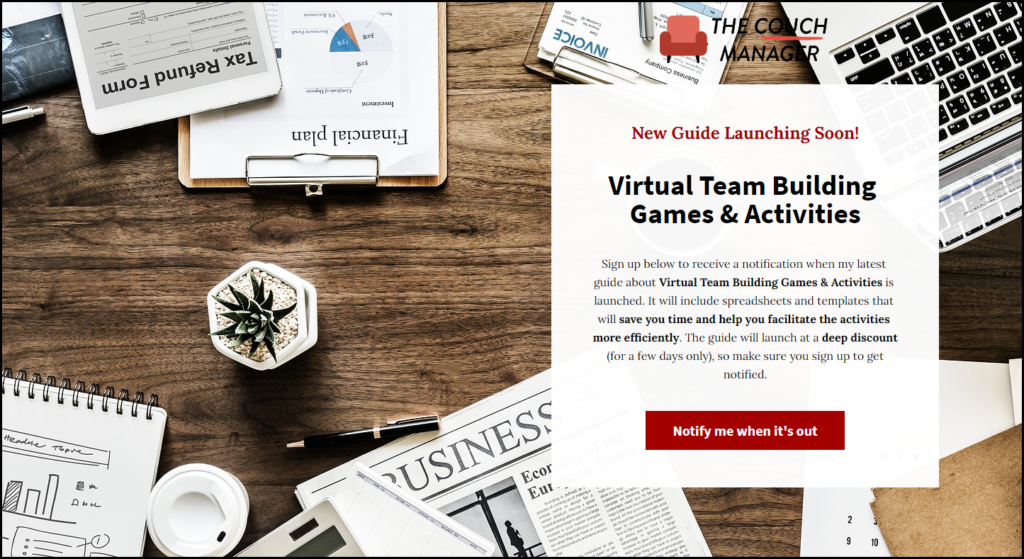
I also built a second email list, which is about how to write a book.
Technically, this email list targets a separate audience that might or might not buy my book.
So I will not be able to rely on the sales from this channel, but I still wanted to build that list in an effort to give back (more about the reasons why in part 1 of this series).
Here’s a screenshot of the squeeze page, (you can also check it out live here).
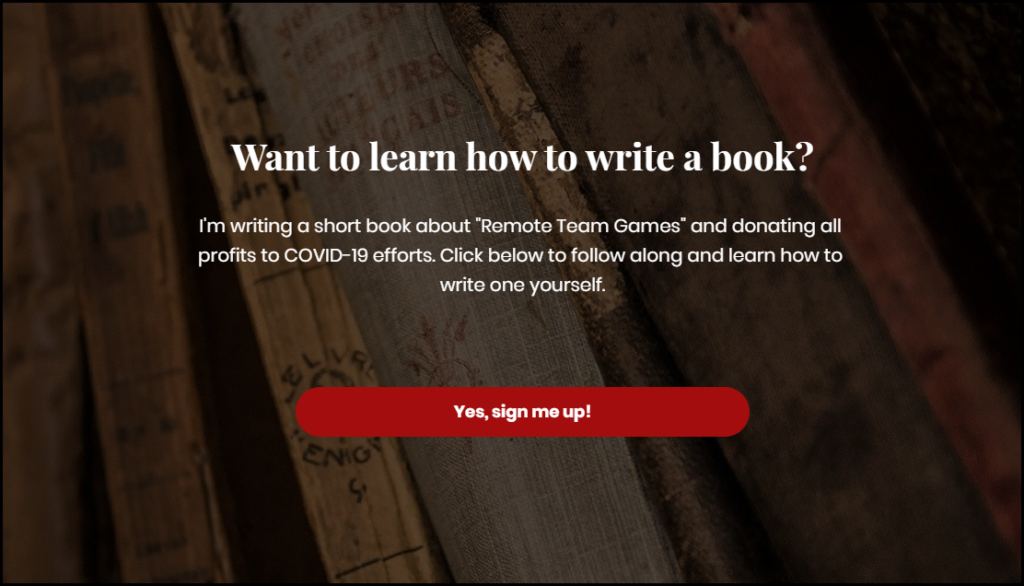
After setting up the squeeze pages, the next step was to start spreading the links to those squeeze pages so that I maximize the number of subscribers.
2) Social Media
In addition to building email lists, I use two main social media platforms: LinkedIn and Twitter
I chose those platforms because the audience that’s interested in virtual team games (and writing books on the side) mainly spend their time there.
I also have a Facebook account and an Instagram one, but I don’t use those as much because 1) I don’t have a lot of time, and 2) I realized that people on those platforms are more interested in connecting with family and sharing pictures, so they don’t help as much.
Side note: I’m sure some social media guru would disagree with me, and give me some solid reasons why I can sell on every single platform, including TikTok, but I have to balance my time with other more important things.
My goal on Twitter and LinkedIn is to share “micro-content” about progress.
For example, I shared the following post on LinkedIn:
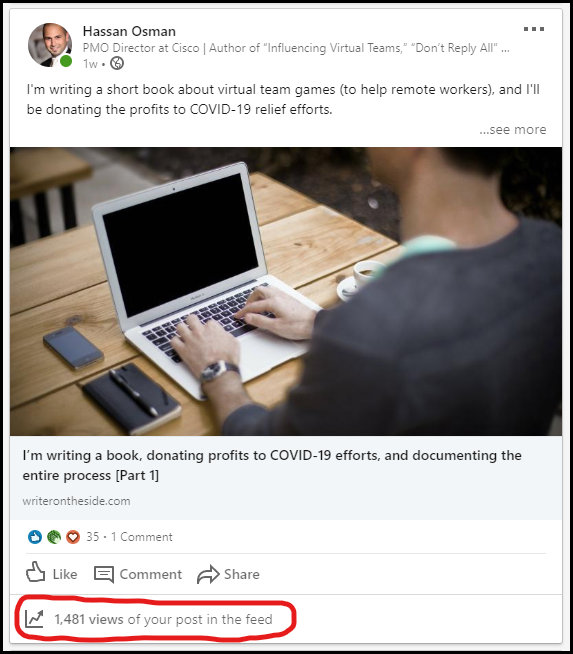
As you can see, it got around 1,400 views, which was great.
I also tried to give updates that people are interested in, such as this one on Twitter.
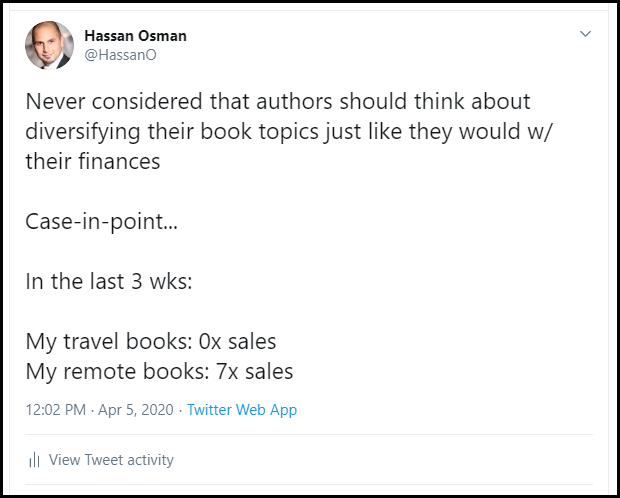
Although this doesn’t necessarily “sell” anyone on anything, it helps with giving a perspective on things, which incentivizes people to follow me and check out my profile.
And the first thing people see when they visit my profile is my “Pinned Tweet” which references my book-writing journey:
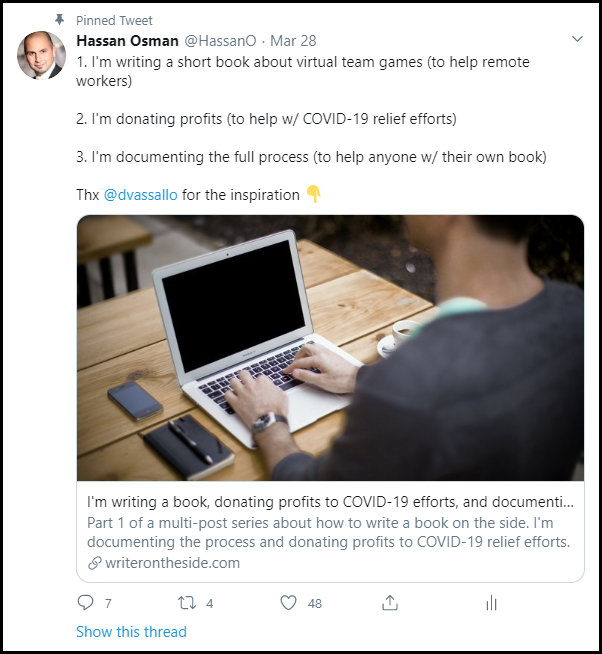
This pinned tweet got me around 8,800 impressions (and counting), which leads to even more subscribers when people read it.
3) Blogging + Podcasting
I run two blogs. The first one is Writer on the Side (this one), and the second is The Couch Manager.
Each one has a different audience.
“Writer On The Side”
With the Writer on the Side blog, I use it to share updates about my journey (such as the one you’re reading now).
I also ask for folks to sign up via email if they’re interested by directing them to my squeeze page (after each post).
In addition to posts, I also use my Writer on the Side podcast to give frequent updates about my progress. The content on my podcast is similar to the content that I share on the blog, but I speak a bit more freely and cover some off-the-cuff thoughts that are more natural (check out the last episode here).
I also ask listeners to sign up to my email list if they’re interested.
“The Couch Manager”
The Couch Manager is a blog about managing remotely, which is the primary audience for the book I’m writing.
So to maximize subscribers, I did a couple of things.
First, I cross-posted the “Part 1” article of Writer on the Side on The Couch Manager (see it here). This helped spread the word that I’m writing the book to help with COVID-19 efforts and also helped cross-pollinate my audience members who were interested in the book and also interested in my book-writing journey.
Second, I have a couple of high-performing posts on The Couch Manager that discuss virtual team building, and so I added a call to action at the bottom of those posts linking back to my squeeze page as well.
Here’s a screenshot of that call to action, and you can check it out live here.
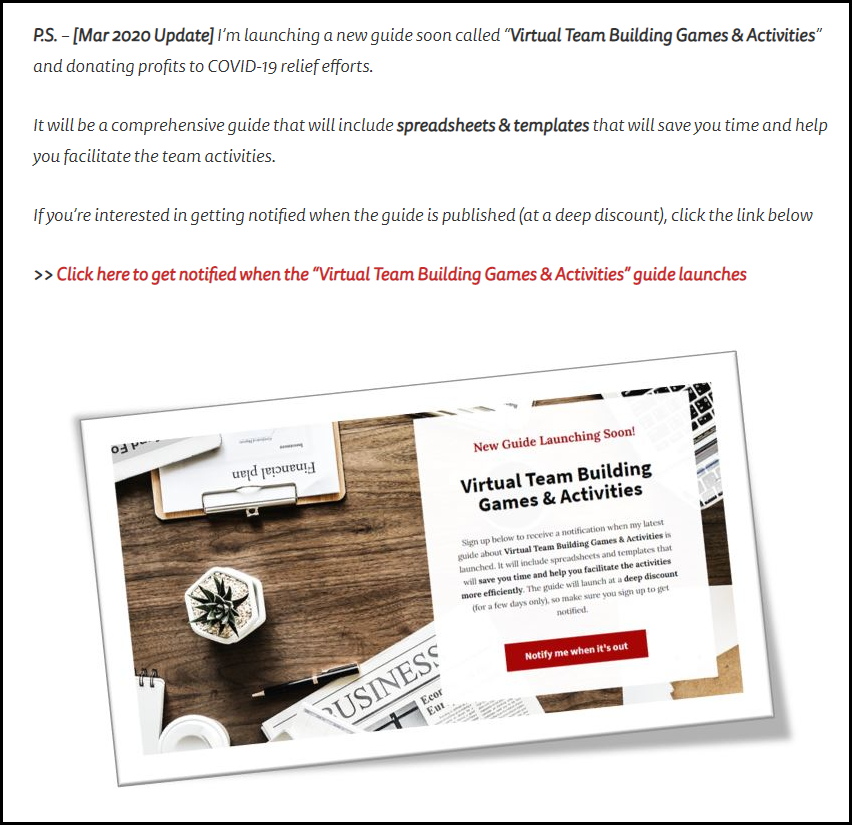
Results
All those efforts have helped build my audience (and continue to do so).
So far, I have around 110 subscribers on the “Virtual Team Building Games” list and 65 subscribers on the “Learn How to Write a Book” email list.
Not huge numbers, but they’re better than zero!
After starting to build an audience, the next step is to narrow down the topic and choose a title & subtitle.
In my next post, I’ll cover the process that I’ll follow. If you’d like to stay updated (and learn about how much money I’ll raise when I sell the book), subscribe to get email updates here.
Update: Part 4 is now published